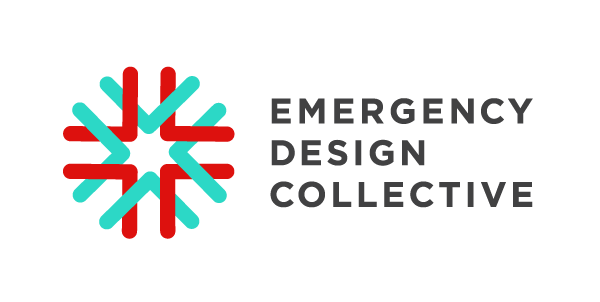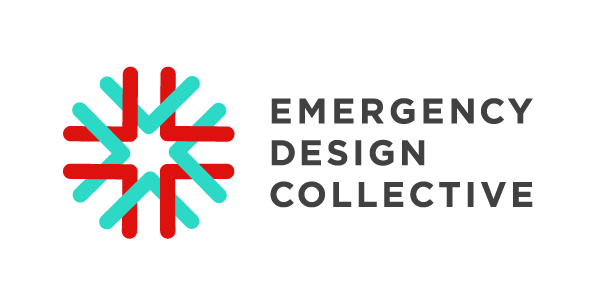End of Life During The COVID-19 Pandemic: Key Insights
PROJECT LEAD: Natasha Margot Blum
PROJECT TEAM: David Janka, Sara Cambridge, Leila Roumani, Scott Witthoft, Benjamin Seligman, Nadia Roumani, Alana Ippolito, and Andrew Holder.
AUTHORS: Natasha Margot Blum & David Janka (Death, Dying & Desires), Conclusion by Derek Yan
INTRODUCTION
Over 3 weeks, a bold group of us — researchers, designers, clinicians, and academics trained in human-centered design — have coalesced to understand what palliative care, hospice, dying and grieving from and during COVID-19 looks like. Our initial goal: how might we design for this uniquely challenging period to support the dying, their families and loved ones, the medical system providing care, and communities in grieving?
We have conducted rapid discovery research into the novel coronavirus’ impact on end of life in the U.S., where our core team is based, through expert and stakeholder interviews, secondary research, participatory immersion, and a comparative analysis of existing end-of-life resources. Through interviews ranging from clinical experts to people who have lost family members, we have been fortunate to learn from the experience of the following people during our immersion.
INTERVIEW SUBJECTS
Max Ritzenberg, M.D., Emergency Department, Zuckerberg San Francisco General Hospital, and Veterans Administration, Palo Alto
Kai Romero, M.D., Emergency Department, UCSF, & Chief Medical Officer, Hospice By The Bay
Michael Fratkin, M.D., Resolution Care (@MichaelDFratkin)
Sheila Poswolsky, Retired RN, Palliative Care at Veterans Affairs Boston Healthcare System
Christina Pascarzi, PsyD, Clinical Psychologist specializing in anxiety & OCD (@Christina Pascarzi, PsyD)
Evening Star End-of-Life Doulas: Christine Borchert, Darci Shaver, Deanna Hagy, MaryAnn Giunta, Victoria Quinn-Stephens
Jeremy Whyman, M.D., Palliative Care & Inpatient Geriatrics, Beth Deaconess Israel
Elysa Fenenbock, family member, artist and designer at ReImagine and beyond (@Elysa Fenenbock)
Judy Lee Haworth, Design Thinking Coach, Designer and Strategist, with experience re-thinking advanced care planning and advanced directives (in collaboration with Prerna Dudani, Strategic Innovation Consultant)
Clockwise from top left: Evening Star End-of-Life Doulas, Sheila Poswolsky, RN, Elysa Fenenbock, Dr. Michael Fratkin of Resolution Care, Dr. Christina Pascarzi
Five central themes emerged from our research.
Theme #1: Rapid Unpredictability
Unpredictable, accelerated death is on our doorstep With the current pandemic we are seeing isolated, scaled and accelerated deaths. The window from healthy to very sick is shorter than in usual end-of-life palliative care planning. For physicians, COVID-19 behaves unpredictably – what should work doesn’t, sudden declines follow hopeful improvements.
In palliative care, patients have a serious illness but death is not immediate. Time is comparatively abundant – to reflect, cope, reassess, consider treatment options. COVID-19 moves more rapidly than long-term illness, but palliative care and hospice teach us the process – and we must adapt it to this pace.
During a pandemic, people are uniquely attuned to the possibility of death (even if they are not considering themselves directly at risk). Could this be an opportunity for our culture to meaningfully engage with death as a collective experience? Might we approach it from a uniquely American perspective of agency – to shift the stigma around dying as a passive force that happens rather than a choice, to be designed with the same thought we give our lives?
Theme #2: Complex Decision-Making
Decisions are a series of micro-moments There is no one decision - there are many micro-decisions that lead to a future state. There are several decisions to make, some big, some small—and many “little details” can have a huge impact (bring a phone charger, share your passwords, check your email) on the decisions available to a person and their loved ones down the line.
Emotional vs logistical decisions A tension between emotional needs and logistical needs around dying, and the fuzzy intersection is difficult to parse. One thing is very clear: when death comes, and no prior logistics are in place, people lose the opportunity to grieve because they must research and quickly make decisions. Logistical scaffolding enables emotional space to process pain and loss.
Accepting death as failure – rather than normal – clouds judgment Clinically, people are out of touch with their own bodies and their embodied sense of wellbeing. The effect of an intervention can be seen and felt in the body, but our culture in the U.S. is conditioned to reject death as a failure, rather than natural. We revere extremes, demand the kitchen sink of aggressive attempts to save life, and repress the signals our bodies tell us about their state.
Unknowns abound in the process of death and dying In the case of COVID-19, what happens beyond the threshold of the hospital entrance, is even foreign, obscuring an already complex journey. Making decisions blindly is difficult, and reasonably so. The nature of this crisis leads people to make end-of-life decisions based on resource availability (i.e. “don’t take me to the hospital if I can’t be with my family”; or “don’t use the vent on me over a younger patient”).
No decision is a decision in itself If no decision has been made, this will default to the family or designated surrogate of a patient. Some families are completely out of alignment, which can be emotionally as tough for the family as it is for healthcare providers, trying their best to support divergent wishes. Will Uncle Larry be the advocate you hope he will be? Or might someone else do a better job in that role?
Illustration by Andrew Holder
Theme #3: Adaptive Communication
Where are these decisions recorded? How are they communicated? It depends on the person, as all human-centered, patient-centered wisdom tells us. During COVID-19 progression, a patient’s ability to communicate diminishes. When someone cannot speak, maybe they can they write--if the appropriate writing surface and tool are available. If a proxy has been selected to make healthcare decisions, how are their communication abilities factored in? COVID-19 has highlighted these variable needs and revealed points of friction that add stress, obstacles and confusion.
Shared Language & Meaning People use euphemisms when talking about death and dying--what do they really mean? A lot of the terms relevant to end of life options and decisions can be interpreted in different ways. This is also colored by peoples experience and exposure to depictions of these situations in the media or entertainment. Communication must be culturally relevant and sensitive, must consider literacy and a person’s native language. Some people are visual learners and need to see what they are considering.
The double-edged sword of technology-enabled communication Since COVID-19 has disrupted our lives, technology has been inherent to the way information is shared, decisions are made and connection is preserved. Even before this crisis, one hiccup in these chains of technology could hamper communication entirely. A pattern emerged as we heard repeatedly about details that can make or break connections during end-of-life, when time windows can be tight and you might only get one shot.
Do all parties own the appropriate technology or can they get temporary access? In times of stress and rapid decision making, people may be left out if they aren’t on the right platform at the right time. We heard from an interview that a recent opportunity to participate remotely in a funeral service was lost because the information was only sent out over email, at a time when this person was abstaining from screen time. When someone is responsible for facilitating virtual participation during death or a funeral, they must understand, explicitly or implicitly, certain elements of audiography (position of microphone, toggling between mute modes--intentionally) and videography (image framing and orientation, stability, avoiding drift). They must consider power for the device, back up batteries and access to outlets. While many of these details feel mundane, they matter right now.
Unlocking access Paramedics still know to look on the fridge for a DNR (Do Not Resuscitate order). If critical paperwork is elsewhere, no one can use it unless someone knows where it is and can retrieve it. If a will lives in a locked garage of your cousin, it can’t help her or you. Decisions and communications need to be adapted so that they can reach family, or clinicians, or travel with a person who needs treatment and may begin the dying process. Keys, combinations and passwords must be considered.
Theme #4: Anticipatory Anxiety & Avoidance of Death and Dying
Anticipatory anxiety precipitates avoidance of planning for end-of-life care and death Dr. Pascarzi shared that our anticipation of the unknown and undesired is often far worse than the actual experience, and amplifies the desire to procrastinate important decisions. An analogue from her work with OCD patients is exposure therapy, which involves a self assessment of how anxious or scared clients predict they will be, and a self-assessment of how relieved they predict they will be once they overcome their fear of performing a specific behavior. To help overcome anxiety, people need easily achievable “entry points” to develop a sense of agency, and assurance that they are not failing in new territory.
Legacy precedes paperwork in the journey of acceptance of death End-of-life paperwork requires a certain degree of acceptance. It’s no wonder that advanced directives have low completion rates. Medical complexity is high, and emotions are intertwined with logistics. The Evening Star End-of-Life Doulas shared several helpful tools they use with clients to help them evaluate and define their legacy, a critical stage that celebrates their life – and helps them reflect on their values and resolve their regrets.
We lack exemplary models of good – or great – death Many passionate end-of-life stewards found their calling through a traumatic or sub-optimal experience with death. We learned from the Evening Star Doulas that to guide others means to know the experience yourself. Most people have not contemplated what a good dying experience could be, much less how to die. From emotional to logistical aspects of dying, there are so many options and unique perspectives. “People don’t know that you don’t have to embalm a body.” From religious to environmental influences, across emotional and logistical elements of dying, options abound (is human composting on your radar?), but currently require self-initiated searching.
Illustration by Andrew Holder
Theme #5: Authentic Presencing
Remote care during the dying process is actually not new, nor is grieving at a distance. Dr. Michael Fratkin and his team at Resolution Care offer remote palliative care and have long before COVID-19 arrived. It allows them to scale supportive services for the dying and their loved ones, and mitigate burnout for palliative care and hospice providers who would otherwise travel far and wide for visits. Remote video care offers one connection point – seeing and being seen on-screen. Because both parties know there is no other means to signal presence, video can actually engage more than an in-office visit with a doctor, for example, who would otherwise be turned toward their computer, hurriedly charting notes.
Creating more presence via video Front line workers are using tablets and smartphones to help patients who land in the ICU communicate with their families. COVID+ patients who remain at home rely on the same video technology. Dr. Fratkin emphasized the importance of creating more surface area via video to create a harmonious connection – the more surface area, the more conduction between people – like a capacitor.
Authentic participation and space to process creates more connection One can lead a service, write a eulogy, be the point person to run an online meeting or make a playlist or video. Witnessing is also an essential part of participation. It is important to consider how people interpret what is happening during the stages of dying and grieving. Survivors will be profoundly affected by the dying experience; the “witnessing gap“ between people can be large, and the take home message radically different for each person. Creating space to process the experience is valuable; intent and memory are equally important players.
Grieving is a process, not a singular moment Conditioned guilt persists that being absent for the last breath or ceremony means missing a key moment to support the dying. In fact, there are many opportunities – there is no one moment which is more valuable than another to offer presence, or participate in grieving or honoring the dead. In the Jewish tradition, an unveiling takes place anytime between the end of shiva and the Yahrzeit. There is a second chance to gather and remember, which takes the pressure off people to drop everything at considerable cost to be present for a moment. We learned from one stakeholder who was in another hemisphere when her grandmother died, and wrote a eulogy as her form of participation in her family’s ceremony. She appreciated another chance to say goodbye at the unveiling.
With the voices of incredible healthcare providers, patients, and people trying to make sense of the implications of death guiding our design strategy around end-of-life care, the team is moving forward with concepting solutions. It’s become clear that we must find ways to simplify and encourage discussion about death and dying well before people believe that it’s urgent. The virus ravages our systems at an unprecedented pace, one that requires us to reconstruct a culture of open communication among difficult topics. Now, more than ever in recent history, palliative care begins in the home through honest discussion – hopefully before any major health event – and is central to fulfilling our wishes.
About Us
We are a group of clinicians, designers, academics, researchers and artists working on urgent emergency response efforts to the COVID-19 health pandemic through our shared process of human-centered design, part of the Emergency Design Collective. Project End of Life is passionate about catalyzing meaningful conversation and connection around dying, death and the grief that we are all experiencing — or will soon.











